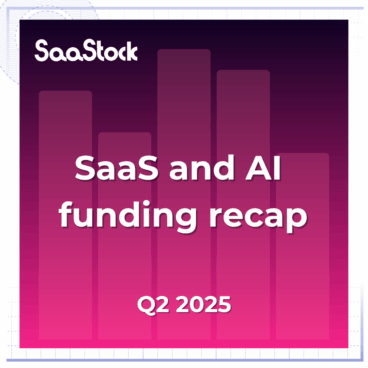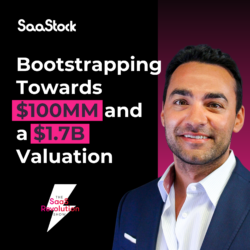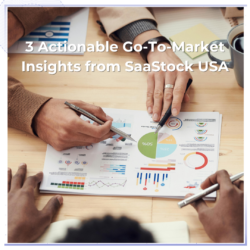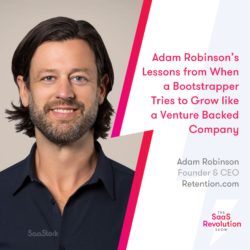All Q2 SaaS funding headlines are saying the same thing: a handful of AI companies are dominating private investment right now.
But that does not tell the wider story or reveal other funding trends in the world of SaaS.
Over the last couple of weeks, I’ve taken some time to look through the latest reports and pulled together a recap of the key SaaS deals, valuations and acquisitions from Q2, with a deep dive into AI funding (and its impact on SaaS).
Q2 VC funding
According to Crunchbase, venture capitalists deployed $91 billion in Q2 – an 11% YoY increase and 20% QoQ decrease. This showed:
- Greater capital concentration. Almost one in every three VC dollars went to just 16 companies (in the US, over a third went to just five companies).
- More AI domination. The AI sector accounted for 45% of all VC funding. Healthcare & biotech ($14.8 billion) and Fintech ($10.8 billion) were the next largest sectors.
- Late stage gains, early stage pain. Late stage-funding was up 53% YoY, while early-stage funding fell to its lowest level in 5+ quarters.
Q2 SaaS deals
Despite increasingly infertile terrain, there were still some green shoots for SaaS deals, including:
- AI-centric SaaS: AI agent management platform Parloa raised a $120M Series C, while AI-powered workflow platform Tines raised a $125M Series C.
- HR & Recruiting: Talent assessment tool TestGorilla raised a $70M Series A.
- Fintech: All-in-one financial operations platform Ramp raised a $200M Series E.
Analysing the deals, SaaS strategist Pavel Novak argues that a fundamental shift has taken place in SaaS funding. For him, the SaaS companies that are successfully attracting funding amidst the AI deluge are those which are capital efficient with profitable repeatability and measurable ROI.
“Having a good product isn’t enough anymore. You need systems that work. And those systems need to prove their value—fast.”
In addition, Silicon Valley Bank found that fundraising benchmarks have once again shifted, with US VC-backed tech companies now raising with less growth and more efficiency. For example:
- The typical Series A company is growing at 69% YoY today compared to 171% in 2021.
- The median Series A company has $2.5M ARR (up 75% since 2021), while Series B is $6.0M ARR (up 20%) and Series C is $13.8M ARR (-3%).
Q2 AI SaaS funding
In Q1, it was OpenAI ($40 billion). In Q2, it was Scale AI ($14.3 billion). While these mega-deals grab headlines, they are just the tip of the iceberg.
Overall, AI startups received 53% of global VC spend in H1 (rising to 64% in the US), with billion+ deals across the board – ranging from year-old AI research labs (i.e. Thinking Machines $2 billion seed round) to 16-year-old comms platform Grammarly’s $1 billion growth financing (who then purchased AI email app Superhuman).
But what’s the impact on SaaS?
The bad news: less funding share. AI spending is growing at 76.4% on a yearly basis compared to just 18.4% for SaaS with AI seed rounds even attracting more investment than some of the largest SaaS IPOs. What’s more, the capital concentration in a small number of AI companies makes it even harder for SaaS companies to attract VC dollars.
The good news: total SaaS replacement is tricky (for now). Very few companies have the capabilities and tech know-how to fully replace SaaS with AI, especially complex SaaS systems. SaaS founders that use AI to add real value to their offer and deliver a ‘complete solution’ to customers’ problems will still stand out and attract investment. This is particularly essential if you’re in the most at-risk SaaS categories, such as workflow management, customer service or analytics/intelligence.
Q2 SaaS Valuations
Unicorns are now so common, they might need a change of name. With 36 added in 2025 so far, there are now nearly 1,600 companies on The Crunchbase Unicorn Board, including some new SaaS entrants:
- Linear, a tool for managing software development, valued at $1.25 billion.
- Teamworks, a sports operating system, valued at $1.25 billion.
- Owner, a restaurant marketing software company, valued at $1 billion.
When it comes to valuations, AI startups tend to earn 2-3x higher valuations than traditional SaaS with Blossom Street Ventures Co-founder Sammy Abdullah finding that:
- The median SaaS multiple is 5.90x revenue while the average is 8.62x.
- Only 22% of SaaS are trading at over 10x revenue (compared to 60% in Q4 2020).
- Median SaaS YOY growth is 15% and median EBITDA margin is 4%.
Q2 SaaS M&A
In Q2 2025, there was $50 billion worth of exit value; the second-strongest M&A quarter since 2021. Some of the key trends include:
- AI is using its funding to go shopping. E.g. OpenAI bought four companies in Q2, including IO ($6 billion) and Windsurf ($3 billion) – though this later fell through.
- Billion dollar purchases. There were 18 acquisitions worth over $1 billion – nine by public companies, six by private venture-backed companies and three by private equity firms.
- Private equity drag. Global PE funds are collecting less and have more than $1 trillion in dry powder as they sit out ‘an unfavourable exit market.’
Looking ahead to H2 2025
“This notion that AI is going to kill SaaS is a bad take. But I think it’s going to fundamentally change it.”
According to Mike Walrath, CEO of Yext, SaaS can no longer sit on its own. It has to embrace AI and solve the full customer problem. For example, Progress Software delivered a Q2 2025 earnings report that showed revenue from its software licenses falling 6%, but its SaaS+Professional Services revenue growing a whopping 330%.
This article was originally published in the SaaStock Blueprint newsletter. Subscribe to get insights like this, straight to your inbox.





